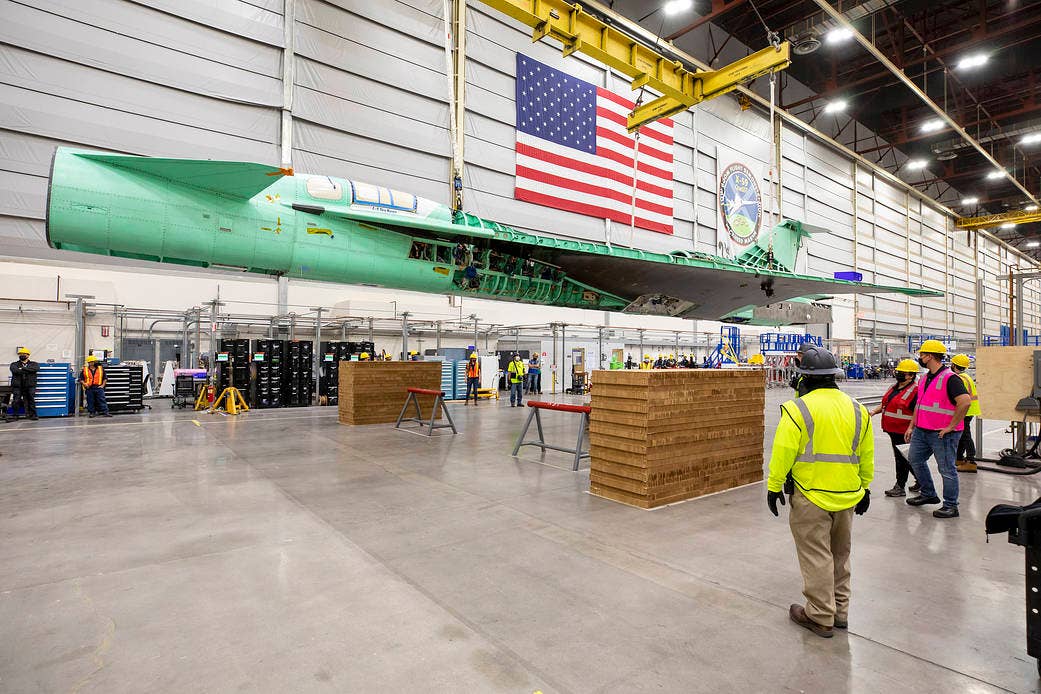NASA’s Supersonic X-59 Readying For Structural Testing
Experimental aircraft is expected to be shipped to Lockheed Martin’s facility in Fort Worth, Texas by year’s end.

The aircraft will undergo ground testing to ensure it can hold up to flight loads and stresses. Credit: NASA
NASA's low-boom supersonic experimental aircraft will soon be transported from the production floor at Lockheed Martin Aeronautics Company’s Skunk Works factory in Palmdale, California, to Texas for structural testing.
The X-59 Quiet SuperSonic Technology (QueSST) experimental aircraft is part of a NASA’s Low Boom Flight Demonstration project aimed at collecting data to help shape regulations for possible future commercial supersonic flight over land.
Earlier this month, NASA announced the airframe had been removed from the jig system that provided external scaffolding support and that it was being readied for next steps, which included a first “power on” of the aircraft’s internal systems.
The aircraft, which has been under construction since 2018, is expected to be shipped to Lockheed Martin’s facility in Fort Worth, Texas, for structural tests by the end of 2021, according to NASA. There, it will undergo ground testing to ensure it can hold up to flight loads and stresses, and its fuel systems will also be calibrated and tested.
“The program is proceeding according to schedule,” Lockheed Martin spokesperson Candis Roussel told FLYING. “It will be happening sometime in the near future.”
The structural testing in Texas is expected to last a few months, and upon its completion, the aircraft will return to California, Roussel said.
The X-59’s first flight is slated for the coming year, according to NASA.
In addition to collecting data, the X-59 flights will also be gauging the public’s reaction to supersonic “thumps,” NASA said.
The aircraft’s distinctive nose, which comprises nearly a third of the aircraft’s total length, is designed to shape shock waves during flight and reduces loud sonic booms as it flies at supersonic speeds of about 660 mph at sea level.
“The airplane is shaped in a way that reduces a sonic boom typically associated with supersonic aircraft to a quiet sonic thump to people on the ground,” NASA said. “The mission’s findings will be sent to regulators to help create new rules regarding speed limitations on supersonic flight over land.”
Supersonic flight over land without sonic booms is something that aerospace engineers have been trying to achieve since the 1960s when engineers in the United States and Europe were developing civilian supersonic transports such as the SST and Concorde. In 1973, the FAA banned aircraft from flying over land faster than Mach 1 (the speed of sound). Although the SST program was canceled in 1971, Concorde went on to fly for British Airways and Air France from 1976 to 2003, its supersonic cruising near the United States limited to only over the Atlantic Ocean.Editor's Note: Dan Pimentel contributed to this report.

Sign-up for newsletters & special offers!
Get the latest FLYING stories & special offers delivered directly to your inbox






